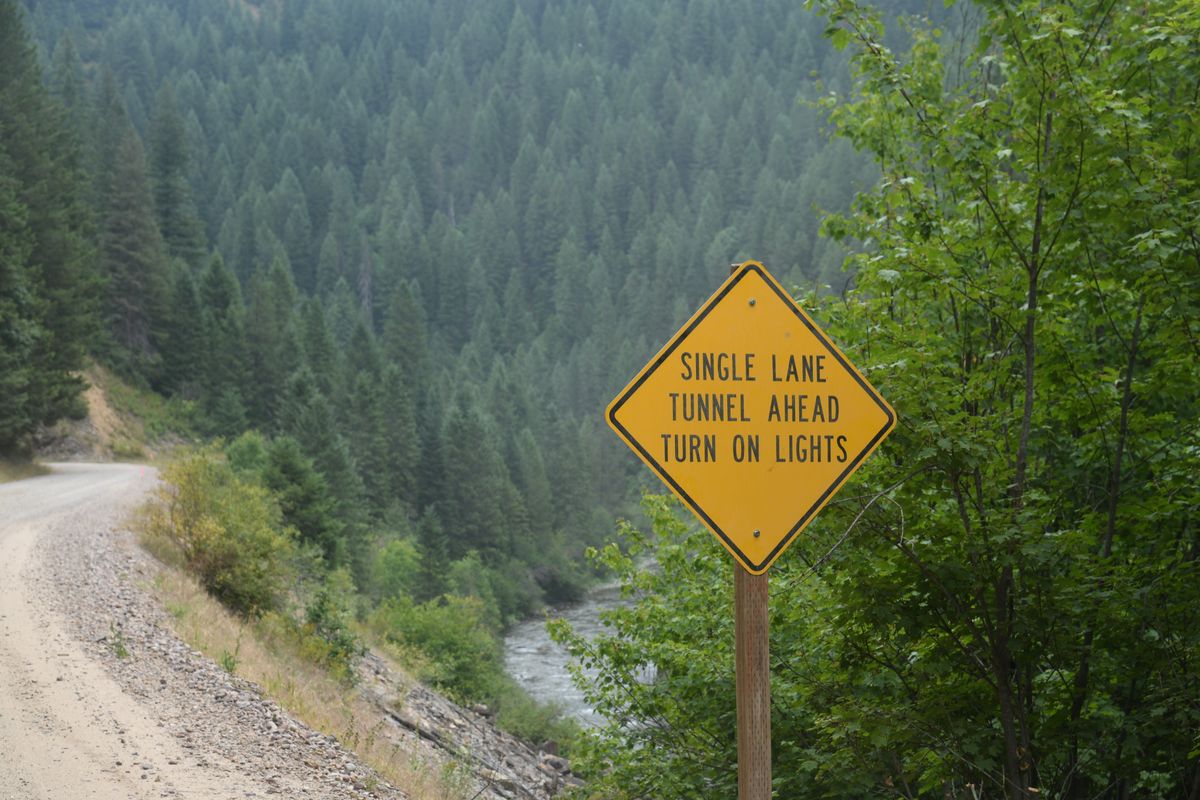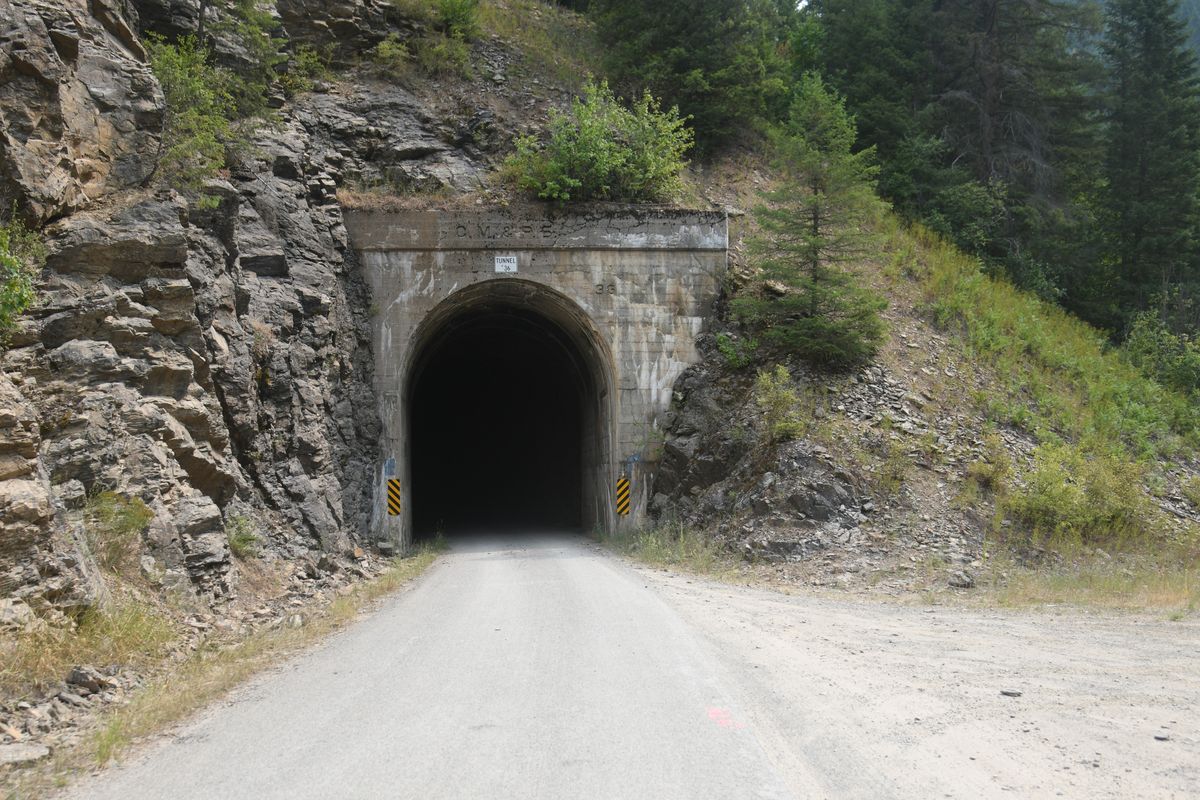Michael Wright: Finding treasure by driving past fish
A sign warns motorists of an upcoming tunnel along Moon Pass Road. (Michael Wright/The Spokesman-Review)
The North Fork of the St. Joe River is the least prominent of North Idaho’s north forks. Anglers are more inclined to rave about the directional branches of the Coeur d’Alene and Clearwater rivers. When they do venture west of St. Maries and up the St. Joe drainage, most are more inclined to settle for a roadside run on the main Joe than to turn left outside of Avery and leave the blacktop behind.
It makes sense. Westslope cutthroat trout grow big and pretty in the other north forks. Besides, to get to the North Fork of the St. Joe, an angler would have to drive past 40-something miles of the main Joe, possibly the best cutthroat stream in the region.
Why drive past fish to find fish?
Well, sometimes it pays off.
It was a Saturday morning and I was up early, knowing that it was August and that the temporal window for catching trout was going to be narrow. I’d yet to hit the St. Joe this summer, so I headed that direction. I knew I needed to go way up the drainage to find the coldest water, and I also knew every other angler in the Inland Northwest was probably thinking the same thing. The weather was sunny with a high chance of crowds.
Along the way, I started wondering about the North Fork. I knew it existed, and that a road ran next to it. Surely it held fish, and surely those fish would indulge me. Splashing around in a small stream next to a gravel road is always more fun than making hero casts to the soundtrack of a highway, so when I got past Avery, I turned north on Moon Pass Road. A mile or two in, I pulled over and rigged up next to an empty campsite.
People will tell you that cutthroat trout will eat anything. That’s not always true. The fish I encounter seem to choose a new favorite dry fly each year. It’s almost like they hold an annual election, casting ballots to decide whether they’ll spend the summer reliably mauling the purple haze or the orange stimulator or some write-in candidate made of foam and fuzz.
On this particular day, the winner appeared to be the bugmeister – a relatively esoteric pattern made of peacock, chicken and elk that is a serviceable imitation of a wide array of stoneflies and terrestrial insects. Within about an hour, I’d tussled with a half-dozen fish, all fairly small but nice to look at.
I decided to drive on in search of more fish. The road climbed a little higher and then I saw a sign that I wasn’t expecting: “Single Lane Tunnel Ahead.”
Moments later, there it was, a cement archway lodged into the mountain, the center of it dark as night.
Those familiar with the North Idaho backcountry and its history already know what I’d stumbled upon. Moon Pass follows the bed of the Milwaukee Railroad, which connected this part of Idaho to the rest of the world for most of the 20th century. Avery served as a major hub, and this route connected it to Wallace.
Of course, weaving trains through these mountains meant there had to be some tunnels. Eight of them are part of the Route of the Hiawatha bike trail. Seven are on Moon Pass, which skirts past a trailhead for the popular bike route.
Trains stopped running through here decades ago, and now Moon Pass is a joy ride for off-roaders, campers and those who are easily fascinated, like me.
I parked outside the first tunnel I encountered and walked inside. It was dark and quiet. It was hard to imagine a train rumbling through, and even harder to imagine how one cuts a tube through a mountain.
Back in the car, with the brights turned on, I drove through the tunnel. Not long after, I passed through a couple more. Each one made me grin like a child who just discovered ice cream.
Yes, these tunnels are no secret. But I started the day just hoping to find a fish or two. A surprise encounter with outdated and repurposed infrastructure felt like finding some kind of treasure.
I’m going to have to start driving past fish more often.



